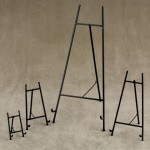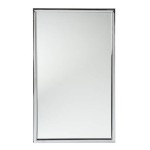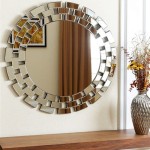Can You Glue Molding to a Mirror? A Comprehensive Guide
The question of whether molding can be successfully glued to a mirror is a common one, arising in both interior design projects and DIY endeavors. The answer, while affirmative, is nuanced and dependent on various factors. Successfully adhering molding to a mirror requires careful consideration of the materials involved, the proper adhesive selection, and meticulous application techniques. Improper execution can lead to aesthetic disappointment, decreased longevity, or even damage to the mirror itself.
Mirrors, typically composed of glass with a reflective backing, present a smooth, non-porous surface. This characteristic makes it challenging for many adhesives to form a strong, lasting bond. Molding, on the other hand, varies significantly in material composition, ranging from lightweight polystyrene to solid wood. Each material possesses different properties that influence its adhesion capabilities. Combining these dissimilar materials requires an adhesive formulated to bridge the gap and create a durable connection.
The weight of the molding is another critical consideration. Heavier moldings exert greater stress on the adhesive bond, increasing the likelihood of failure over time. Therefore, selecting an appropriate adhesive and employing adequate support during the curing process are essential for ensuring long-term stability.
Understanding Adhesive Selection for Mirror Applications
The selection of the correct adhesive is paramount for successfully gluing molding to a mirror. Not all adhesives are created equal, and some can actually damage the reflective backing of the mirror, leading to unsightly blemishes or even complete delamination. It's critical to avoid solvent-based adhesives like construction glues that contain toluene or other harsh chemicals as these can react negatively with the silvering or aluminum backing of many mirrors.
Mirror mastic, specifically formulated for bonding mirrors, is generally the recommended choice. Mirror mastic is a type of construction adhesive that is chemically compatible with the reflective coating on mirrors. It is designed to provide a strong, permanent bond without damaging the sensitive backing. However, not all mirror mastic is created equal. Some formulations may be better suited for specific types of molding materials than others.
Another viable option is a high-quality silicone adhesive. Silicone adhesives are known for their flexibility and resistance to moisture, making them suitable for environments with fluctuating humidity levels. However, it's crucial to select a silicone adhesive that is specifically labeled as mirror-safe. Acid-cure silicones should be avoided, as they can corrode the mirror’s backing over time. Neutral-cure silicones are a better choice, offering excellent adhesion and compatibility with mirror surfaces.
Polyurethane-based adhesives are also potential candidates, offering strong bonding capabilities and good resistance to temperature changes. However, it's essential to verify compatibility with both the mirror backing and the molding material. Some polyurethane adhesives can be quite rigid, which may not be ideal for applications where flexibility is required.
Double-sided adhesive tape, particularly those designed for mirror mounting, can be used for lightweight molding. These tapes offer a clean and relatively quick application process. However, their holding power is limited, and they are generally not suitable for heavier molding or applications where long-term durability is critical. Consider using the tape in conjunction with mirror mastic for added security if your molding is lightweight.
Before embarking on any gluing project, testing the adhesive on a small, inconspicuous area of the mirror and molding is highly recommended. This allows you to assess the adhesive's bonding strength and compatibility with the materials without risking damage to the entire project.
Preparing the Mirror and Molding Surfaces
Proper surface preparation is crucial for maximizing the adhesive's bonding strength. Both the mirror and the molding surfaces must be clean, dry, and free from any contaminants that could interfere with adhesion. Failure to adequately prepare the surfaces can significantly reduce the bond's durability, leading to premature failure.
Begin by thoroughly cleaning the mirror surface with a non-abrasive cleaner designed for glass. Avoid using ammonia-based cleaners, as they can leave a residue that inhibits adhesion. Wipe the surface clean with a lint-free cloth to remove any traces of the cleaner. For stubborn residues, isopropyl alcohol can be used to degrease the surface.
Next, prepare the molding surface. If the molding is new, ensure it is free from dust, dirt, and any manufacturing residues. If the molding is pre-finished, lightly sanding the bonding surface with fine-grit sandpaper can improve adhesion by creating a slightly rough texture. This provides the adhesive with more surface area to grip onto.
For painted or varnished molding, remove any loose or flaking paint with a scraper or sandpaper. If the existing coating is sound, lightly sand it to create a key for the adhesive. Clean the molding surface with a tack cloth or a damp cloth to remove any sanding dust. Ensure the surface is completely dry before applying the adhesive.
Some adhesives may benefit from the application of a primer to either the mirror or the molding surface. Primers can improve adhesion by creating a chemical bond between the adhesive and the substrate. Consult the adhesive manufacturer's instructions for recommendations on primer application.
Wearing gloves during the cleaning and preparation process is recommended to prevent transferring oils or contaminants from your hands to the bonding surfaces.
Application Techniques and Support Systems
Applying the adhesive correctly is just as important as selecting the right adhesive and preparing the surfaces. Improper application can lead to weak bonds, unsightly gaps, or uneven molding alignment. Following the adhesive manufacturer's instructions carefully is essential for achieving optimal results.
Apply the adhesive to the back of the molding in a uniform bead or series of beads. Avoid applying excessive amounts of adhesive, as this can squeeze out and create a mess. For larger or heavier moldings, applying multiple beads of adhesive is recommended to ensure adequate coverage.
Position the molding onto the mirror carefully, ensuring it is properly aligned. Once the molding is in place, apply gentle pressure to ensure good contact between the adhesive and the mirror surface. Avoid applying excessive pressure, as this can damage the mirror or cause the adhesive to spread unevenly.
Support systems are crucial for holding the molding in place while the adhesive cures. Clamps, painter's tape, or temporary shims can be used to provide support. The type of support system will depend on the size and weight of the molding, as well as the shape of the mirror.
For small to medium-sized moldings, painter's tape can be used to secure the molding to the mirror. Apply strips of tape across the molding and onto the mirror surface, ensuring the tape is firmly adhered. For larger or heavier moldings, clamps may be necessary to provide adequate support. Use caution when applying clamps to avoid damaging the mirror or the molding.
Temporary shims can be used to maintain proper alignment and spacing. Place shims between the molding and the mirror surface as needed to achieve the desired effect. Once the adhesive has cured, the shims can be removed.
Allow the adhesive to cure completely according to the manufacturer's instructions. This typically takes 24 to 72 hours. Avoid disturbing the molding during the curing process, as this can weaken the bond.
After the adhesive has cured, carefully remove the support systems. Inspect the molding for any gaps or imperfections. If necessary, apply a small bead of sealant to fill any gaps and create a seamless finish.
By carefully considering the materials involved, selecting the appropriate adhesive, preparing the surfaces properly, and employing adequate support during the curing process, successfully gluing molding to a mirror is achievable. The result can transform a plain mirror into a decorative focal point, adding a touch of elegance and sophistication to any space.

Easy Diy Tutorial Adding Trim Around A Giant Mirror For Ers

Diy Bathroom Mirror Frame With Molding The Happier Homemaker

Easy Diy Tutorial Adding Trim Around A Giant Mirror For Ers

The Kids Bathroom Mirror Gets Framed House Of Hepworths

How To Frame A Mirror Sand And Sisal

How To Frame Out That Builder Basic Bathroom Mirror For 20 Or Less

How To Frame A Mirror Sand And Sisal

How To Frame A Bathroom Mirror
How To Upgrade Your Builder Grade Mirror Frame It

How To Frame A Mirror Sand And Sisal








